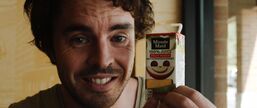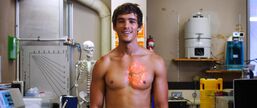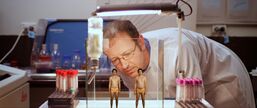Sugars are an important type of organic compounds widely distributed in nature. The sucrose we eat daily, the starch in grain, the cellulose in plants, and the glucose in human blood are all sugars. Carbohydrates play an important role in the process of life activities and are the main source of energy required by all living organisms to maintain life activities.
After humans eat bread, vegetables, pasta or grains, the starch and cellulose in them will be broken down into glucose (clucose). Glucose is the energy source and metabolic intermediate product of living cells, that is, the main energy supply material of living beings. Members of the sugar family also include lactose (lactose) found in dairy products, sucrose (consisting of glucose and fructose) in fruits, and fructose (fructose).
What are the sources of fructose? Honey and fruit juice. Figure 1 is the composition table of sugars in various fruits. As the sweetness of fructose is 1.8 times that of sucrose, which is the sweetest sugar among all natural sugars, fructose is added in large quantities to various desserts, beverages, and processed foods.
Most people do not have an accurate concept of the sugar content in food, and simply believe that only sweets are rich in sugar. But in fact, there are 4.9g of sugar in 100ml of vinegar, 5.4g of sugar in a shrimp dumpling, and more than 50g of sugar in a plate of dry fried Niuhe. Many seemingly sugar-free foods also contain a lot of sugar. . This is the so-called hidden sugar. Many people feel that they are very far away from "sugar addiction", but in fact, when you reach for these foods, you and "sugar addiction" are close at hand.
The director of the film, Damon Gameau, believes in a low-sugar diet and believes that "sugar addiction" is the most common disease that modern people suffer from. One of the great causes of many human diseases is the fructose in our food. Therefore, he carried out a 60-day experiment. Before the experiment, he had insisted on a healthy life without ingesting any refined sugar for 5 years. After the start of the experiment, he needs to eat 40 scoops of hidden sugar (about 200g) a day. The source must be healthy food and beverages, excluding soft drinks, chocolate or ice cream. At the same time, he must also eat low-fat foods to maintain the previous exercise level. This compares the effects of sugar on his body before and after the test. Damon gained 3.2 Kg 12 days after the start of the experiment. His waist circumference has increased sharply, and the full length of the meat is on the belly, indicating that the visceral fat surrounding the organ has increased a lot, but the subcutaneous fat is very small. This is the so-called TOFI---Thin on the Outside but Fat in the Inside. When there is more and more visceral fat, the human body will have various metabolic diseases, such as 2# diabetes, obesity, and heart disease.
In epidemiological observational studies and short-term interventional studies, it has been found that the increase in fructose intake is related to obesity, metabolic syndrome and cardiovascular disease. In animal models, mainly studies on rodents, the possible mechanism of adverse effects when a large amount of fructose is ingested has been determined. Fructose can promote new fat production (fat de novo synthesis), blood vessel dilation and increase sympathetic tone. These mechanisms all induce insulin resistance in liver cells, increase the body's total fat mass and visceral fat mass, and increase the accumulation of ectopic fat in the liver and skeletal muscles, leading to abnormal blood lipids. Fructose reduces the satiety signal of leptin and insulin, causing structural and functional damage to the heart and blood vessels, and destroying the diversity of the intestinal microbiota. These early effects may trigger the development of metabolic syndrome. When the experiment was carried out for 15 days, the content of glutalanine aminotransferase (ALT enzyme, the most sensitive detection index for liver damage, as long as 1% of liver cells are destroyed, can double it) in Damon’s liver Soaring, this shows that the liver cells in his body have been substantially damaged and are dying. This also means that Damon may already have fatty liver. This is because the human liver does not have the function of processing fructose. When humans are still foraging and hunting, collecting and searching for food in the environment requires very sweet food, because calories are important. However, our ancestors' desire for sugar is very little left in us. Modern people have very little demand for sugar, but the content of fructose in food is too high. The human body has not evolved the ability to process highly refined sugar.
When we are hungry and need to properly supplement blood sugar to meet the energy needs of the heart and brain, these important organs, drinking fructose beverages, eating fruits, and eating fructose-containing pastries and snacks will not improve the state of hypoglycemia, but will also increase the burden of fructose metabolism in the liver. . When hungry, we can only supplement glucose-containing starch as energy, such as grain food. The intake of fructose reduces blood sugar levels while also increasing plasma cholesterol and LDL (low-density lipoprotein) cholesterol, which is not worth the gain. The liver's unlimited intake of fructose leads to an increase in the production of fat precursors, which leads to an increase in fat de novo synthesis (DNL, De novo lipogenesis), and fat de novo synthesis means the production of new fat. Even in those subjects who have a balanced energy intake and a diet that maintains a stable weight, the intake of fructose can increase the de novo synthesis of liver fat more than the intake of isocaloric complex carbohydrates. From the final metabolic results, fructose does not provide energy for the body, but more like it provides saturated fatty acids to the body. The starch under total control is mainly used to generate blood sugar to supply energy for the body's organs for consumption. Most starch and glucose are consumed as energy by the tissues and organs of the whole body, instead of being used to synthesize fat from scratch, only too much starch will be used to synthesize fat. Fructose also provides acetyl-CoA and other adipogenic precursors for the de novo synthesis of fat. Animal studies have shown that the rate of conversion of fructose to free fatty acids is 18.9 times higher than that of glucose and produces higher liver triglyceride levels. A study of healthy people showed that fructose is an effective adipogenic substrate, which can significantly increase liver triglyceride levels. Therefore, increasing the fructose that provides the fat precursor and increasing the fat de novo synthesis may lead to the accumulation of fatty acids in the liver or non-alcoholic fatty liver; on the contrary, reducing the intake of fructose in the diet will reduce the fat content of the liver. So, can we not even eat fruit? No, fruits contain a lot of water, dietary fiber and other nutrients, so that when we eat fruits, we will not take too much in a single time, and continue to eat them and it will be difficult to digest. But when you squeeze the fruit into juice, you can find that a cup of 250mL juice with 16 scoops of sugar can easily contain the calories and sugar content of 4 apples. Juices and beverages are very high in sugar, and they try to create a kind of rapid pleasure --- the tsunami effect. A large amount of sugar rushes into the liver, causing many adverse reactions.
The most obvious of these is the dramatic mood swings caused by the increase and consumption of sugar. When you are eating sweets, blood sugar will rise very quickly, but it will also fall quickly because insulin is processing these sugars. This hormone transports sugar to the cells for energy. The blood sugar level is reduced, the brain is no longer excited, and the body releases the stress hormone-adrenaline sends a signal to tell you to continue eating, pulling back to the previous state, allowing you to experience emotions repeatedly Volatility. However, excessive adrenaline can also cause anxiety and panic attacks. One month after the trial, Damon gained 5.2 kg, waist circumference 91cm, and 7cm increase. At 35 days, he started to feel that it was difficult to keep moving, he was not motivated, and his face was swollen and acne. After 60 days, Damon gained 8.5kg and his body fat was 7.5. %, waist circumference +10cm, hormone ALT has increased to more than 20U/L, fatty liver is close to cirrhosis, which is likely to further cause insulin resistance → type 2 diabetes → type 2 diabetes without insulin; 60 days later, Damon blood triglyceride Ester, from 0.08mmol/L to 1.5mmol/L, high triglyceride content indicates that healthy cholesterol has become small, dense low-density lipoprotein, and there is a risk of heart disease, although the content of lipoprotein has little effect. But the shape has a great influence. Due to the ionic interaction between the basic amino acids of low-density lipoprotein and the negatively charged sulfate groups on the arterial wall proteoglycan, this causes the risk of LDL stagnation in the arterial wall to form plaque, which greatly increases The risk of coronary artery disease. Even knowing how much fructose can damage the human body, it is still difficult for humans to resist the temptation of sweets. Through functional magnetic resonance imaging, Damon showed us how sugar works on the brain.
① After receiving visual stimuli, the brain releases dopamine and commands "eat it" because it can quickly replenish energy and make people feel happy. ②The way of sugar addiction in the brain is somewhat similar to nicotine, cocaine or sex. After eating, the opioids and endorphins in the brain will be released, making us feel excited, but this pleasure will not last long. But if a person eats enough sweets, the brain will establish a reward mechanism for this pleasure, forming a subconscious or unconscious behavior. Glucose affects the eating control center, and fructose acts on emotions. After the combination of the two, it is difficult for us to exert our subjective initiative to coordinate. As a result, the more high-sugar foods you eat, the more you want to eat them, and the harder you control them. It can be said to be addictive. Scholars at Princeton University once did an experiment. They put 43 cocaine addicted mice into cages and fed them with sugar water instead of drinking water. After a period of breeding, all 40 rats have changed from cocaine addiction to sugar addiction. Once they are not fed sugar water, they will also have "withdrawal reaction", and even appear to be anxious and overeating. Giants in the food industry have discovered that increasing sweetness can make food taste better, and can make people addicted to this food at a certain amount. The most suitable amount of sugar is called the bliss point (satisfaction point, bliss point). After reaching the bliss point, more sugar content is unattractive to consumers. And all food has its bliss point. This has changed the physical state of contemporary children, and children will feel that everything they eat should be sweet. At the same time, food giants continue to emphasize that obesity is due to excessive calorie intake and lack of exercise, and put forward the concept of energy balance, emphasizing that all calories are the same, and advocating people to reduce calorie intake and eat more low-fat that is beneficial to us. food. However, these low-fat foods have become sweeter and sweeter, and no longer feel full. Only fat and protein can make us feel full. The calorie measurement results of Damon’s experiment showed that the calories consumed during the experiment was almost the same as before or even less, but Damon gained weight in just 60 days8. 5kg. This shows that the current popular calorie calculation method has solidified our thinking. Obesity is not caused by excessive calorie intake, but the source of calories. So, if there is no sugar in food, will these chronic diseases be avoided? There are still no direct experimental results to support this view, but as early as 2014, the World Health Organization’s nutrition guidelines pointed out that the human body should not consume more than 50g of sugar per day, and it is best to control it within 25g. At the end of the film, Damon called on everyone to eat healthy, reject artificial sugars, eat fruits and vegetables, absorb the nutrients in them, abandon hormone disruptors and fructose, and let the appetite control system work again, weight will drop, and the body will recover. To a healthy state. By the way, eating fruits not only depends on the sugar content, but also the glycemic index GI value. Oh, I still don't know how to eat to avoid sugar addiction. That's it.
View more about That Sugar Film reviews











